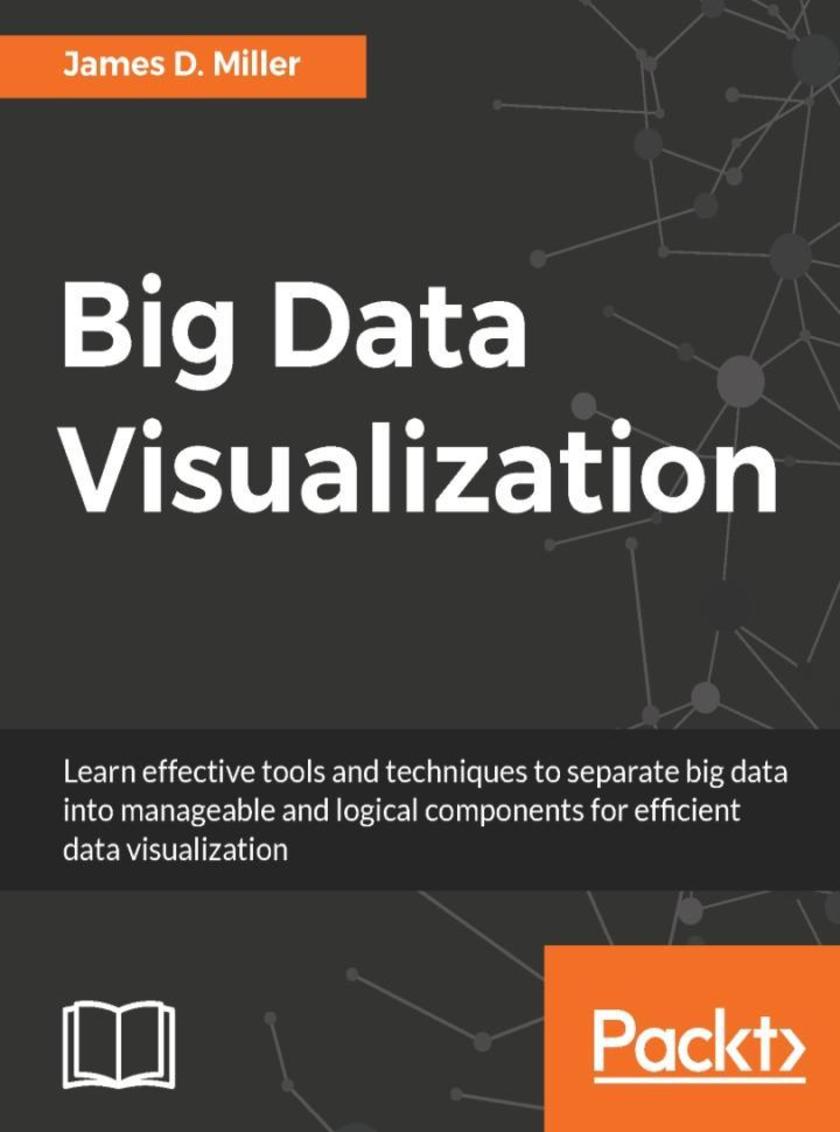
Big Data Visualization
¥80.65
Learn effective tools and techniques to separate big data into manageable and logical components for efficient data visualization About This Book This unique guide teaches you how to visualize your cluttered, huge amounts of big data with ease It is rich with ample options and solid use cases for big data visualization, and is a must-have book for your shelf Improve your decision-making by visualizing your big data the right way Who This Book Is For This book is for data analysts or those with a basic knowledge of big data analysis who want to learn big data visualization in order to make their analysis more useful. You need sufficient knowledge of big data platform tools such as Hadoop and also some experience with programming languages such as R. This book will be great for those who are familiar with conventional data visualizations and now want to widen their horizon by exploring big data visualizations. What You Will Learn Understand how basic analytics is affected by big data Deep dive into effective and efficient ways of visualizing big data Get to know various approaches (using various technologies) to address the challenges of visualizing big data Comprehend the concepts and models used to visualize big data Know how to visualize big data in real time and for different use cases Understand how to integrate popular dashboard visualization tools such as Splunk and Tableau Get to know the value and process of integrating visual big data with BI tools such as Tableau Make sense of the visualization options for big data, based upon the best suited visualization techniques for big data In Detail When it comes to big data, regular data visualization tools with basic features become insufficient. This book covers the concepts and models used to visualize big data, with a focus on efficient visualizations. This book works around big data visualizations and the challenges around visualizing big data and address characteristic challenges of visualizing like speed in accessing, understanding/adding context to, improving the quality of the data, displaying results, outliers, and so on. We focus on the most popular libraries to execute the tasks of big data visualization and explore "big data oriented" tools such as Hadoop and Tableau. We will show you how data changes with different variables and for different use cases with step-through topics such as: importing data to something like Hadoop, basic analytics. The choice of visualizations depends on the most suited techniques for big data, and we will show you the various options for big data visualizations based upon industry-proven techniques. You will then learn how to integrate popular visualization tools with graphing databases to see how huge amounts of certain data. Finally, you will find out how to display the integration of visual big data with BI using Cognos BI. Style and approach With the help of insightful real-world use cases, we’ll tackle data in the world of big data. The scalability and hugeness of the data makes big data visualizations different from normal data visualizations, and this book addresses all the difficulties encountered by professionals while visualizing their big data.
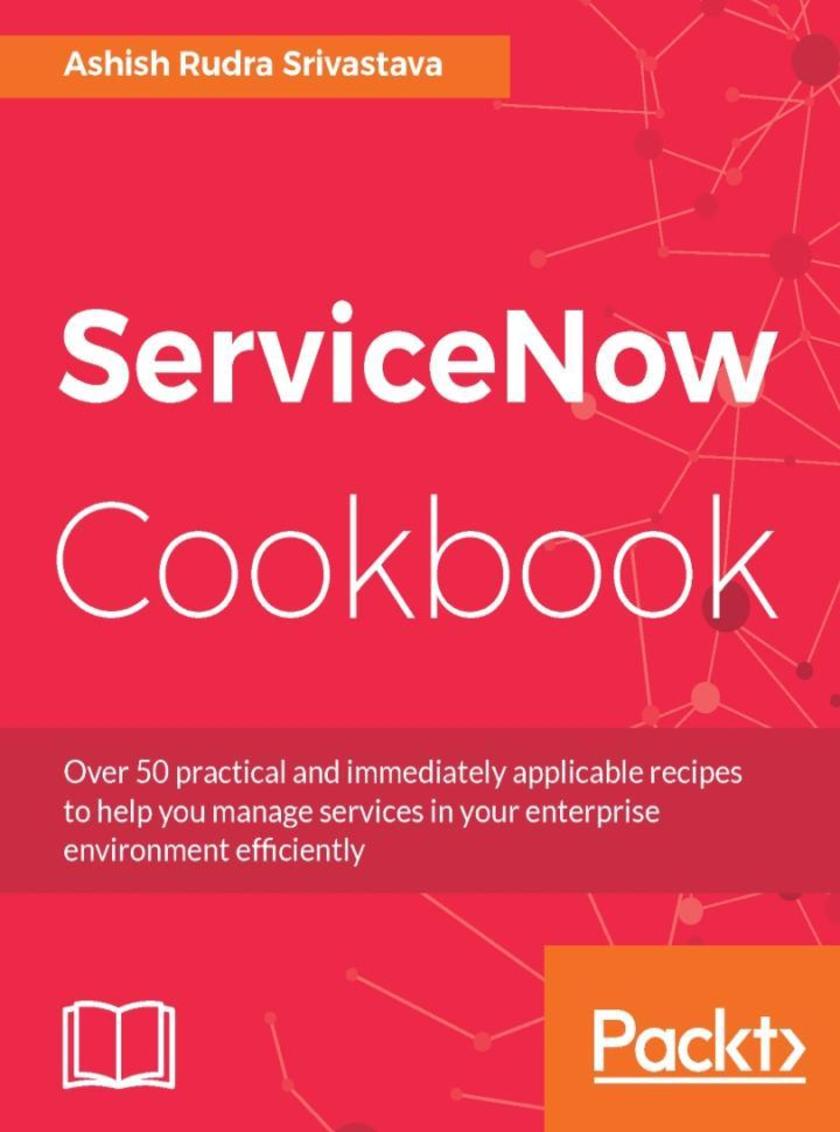
ServiceNow Cookbook
¥80.65
Over 50 practical and immediately applicable recipes to help you manage services in your enterprise environment efficiently About This Book Solve problems and challenges encountered while implementing or using ServiceNow in your organization Helps you build core administration, management, and maintenance skills to automate and orchestrate your IT environment Comes with recipes to improve the way you design and create automated workflows Who This Book Is For This book targets IT professionals and administrators who have some experience of working with ServiceNow already and are looking to solve regular or unique problems that surface when using ServiceNow. It’s advisable to have a basic level of administration experience with ServiceNow. Familiarity with JavaScript is assumed. What You Will Learn Grasp the basics, such as entering and navigation, required to implement ServiceNow Perform core configuration and management tasks Use the ServiceNow plugins to manage development Build and publish custom applications for service management Design data-driven apps to connect with outside worlds by getting into Client and server *ing Configure alerts and notifications and understand e-mail troubleshooting and watermarking Build and configure reports to set up your dashboard as per the requirement Create and configure workflow activities In Detail ServiceNow is the ideal platform for you to create enterprise-level applications, giving borh requesters and fulfillers better visibility and access to a process. With this title we’ll guide you through the world of ServiceNow, letting you take on the best the platform offers you with the least amount of hassle. Starting with the core configuration and management tasks, this book will help you build data-driven apps and it will also explore development best practices. You will learn to set up email notifications for users and work with the database view for reporting. Next, the book will guide you through creating various tasks from the workflow and show you how to make the most of the workflow utilities available in ServiceNow. Finally, the book will drive you through the auditing and diagnosing aspects of ServiceNow. By the end of this book, you will acquire immediately applicable skills to rectify everyday problems encountered on the ServiceNow platform. Style and approach This book follows a recipe-based problem-solution approach to address and dispel challenges faced when implementing and using ServiceNow on a regular basis. It will act as a quick solution when trying to solve specific problems without having to read an exhaustive tutorial.
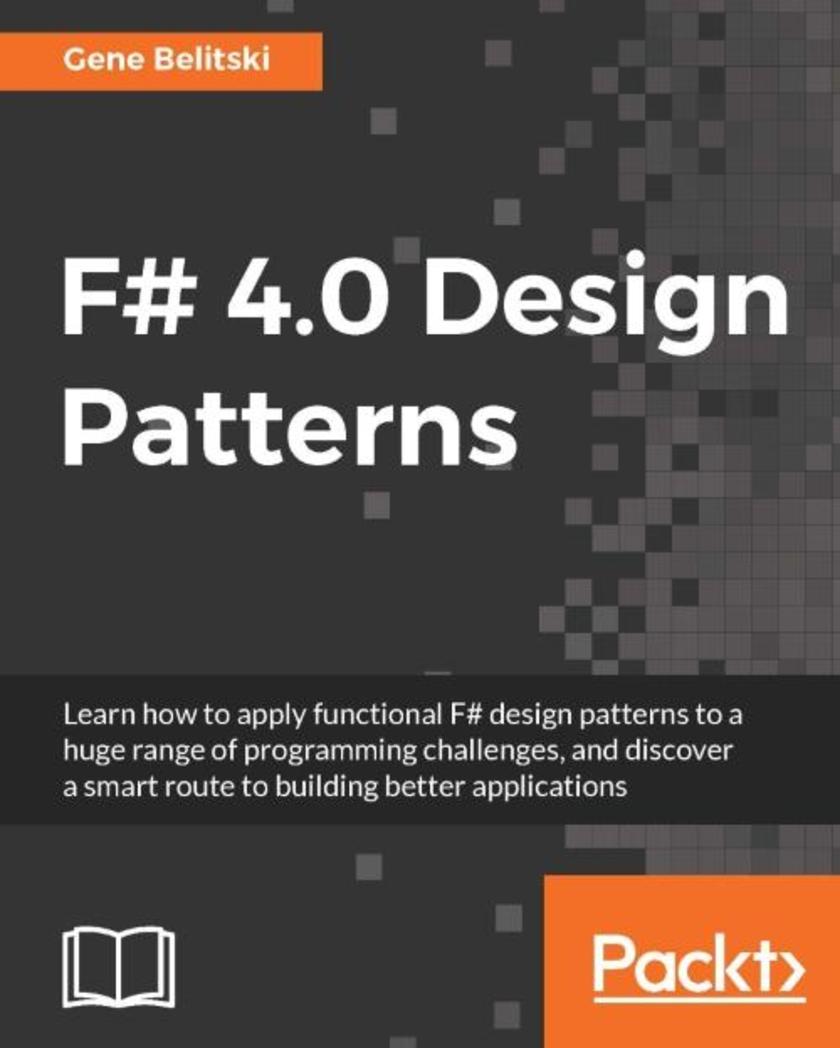
F# 4.0 Design Patterns
¥80.65
Learn how to apply functional F# design patterns to a huge range of programming challenges, and discover a smart route to building better applications About This Book This book provides a path if you are coming from imperative and object-oriented paradigms It will take you to an intermediate level of functional programming in very practical manner to write enterprise-quality idiomatic F# code Tackle complex computing problems with simple code by fully embracing the functional-first F# paradigm Packed full of practical coding examples to help you master F# programming and author optimal code Who This Book Is For This book is for .NET developers, web programmers, C# developers, and F# developers. So, if you have basic experience in F# programming and developing performance-critical applications, then this book is for you. What You Will Learn Acquire the practical knowledge to use the main functional design patterns Realign some imperative and object-oriented principles under the functional approach Develop your confidence in building and combining first-order and higher-order functions Learn to use core language pattern matching effectively Make use of native F# algebraic data types in place of custom-built classes Recognize and measure the difference in resource consumption between sequences and materialized data collections Navigate and use F# Core libraries with ease by seeing patterns behind specific library functions Master writing generic polymorphic code In Detail Following design patterns is a well-known approach to writing better programs that captures and reuses high-level abstractions that are common in many applications. This book will encourage you to develop an idiomatic F# coding skillset by fully embracing the functional-first F# paradigm. It will also help you harness this powerful instrument to write succinct, bug-free, and cross-platform code. F# 4.0 Design Patterns will start off by helping you develop a functional way of thinking. We will show you how beneficial the functional-first paradigm is and how to use it to get the optimum results. The book will help you acquire the practical knowledge of the main functional design patterns, the relationship of which with the traditional Gang of Four set is not straightforward. We will take you through pattern matching, immutable data types, and sequences in F#. We will also uncover advanced functional patterns, look at polymorphic functions, typical data crunching techniques, adjusting code through augmentation, and generalization. Lastly, we will take a look at the advanced techniques to equip you with everything you need to write flawless code. Style and approach This book will teach you how to write F# code in an idiomatic functional-first manner, thereby improving the productivity of F# programmers. This book is ideal for an F# programmer who wants using F# in functional-first way.

Getting Started with Unity 5.x 2D Game Development
¥80.65
Build a tower defense game and earn delectable C# treats by baking cupcakes and fighting fearsome sweet-toothed pandas About This Book Build a complete and exciting 2D Tower Defense game from scratch. Understand and learn to perform each phase of the game development pipeline Homework and exercises to improve your skills and take them to the next level Who This Book Is For If you are looking forward to get started with 2D game development, either if you are a newcomer to this world, or you came from 3D games or other game engines, this book is for you. Although there are many references to other resources throughout the book, it is assumed that you have a general understanding of C# and its syntax and structure. What You Will Learn Import and set up assets for 2D game development Design and implement dynamic and responsive User Interfaces Create and handle complex animation systems Unlock all the potentiality of the physics engine Implement Artificial Intelligence algorithms to give intelligence to your NPCs Script gameplay and overall bring your ideas to life In Detail Want to get started in the world of 2D game development with UnityThis book will take your hand and guide you through this amazing journey to let you know exactly what you need to build the games you want to build, without sacrificing quality. You will build a solid understanding of Unity 5.x, by focusing with the embedded tools to develop 2D games. In learning about these, along with accurate explanations and practical examples, you will design, develop, learn how to market and publish a delectable Tower Defense game about cupcakes versus pandas. Each chapter in this book is structured to give you a full understanding on a specific aspect of the workflow pipeline. Each of these aspects are essential for developing games in Unity. In a step-by-step approach, you will learn about each of the following phases: Game Design, Asset Importing, Scripting, User Interfaces, Animations, Physics, Artificial Intelligence, Gameplay Programming, Polishing and Improving, Marketing, Publishing and much more. This book provides you with exercises and homework at the end of each chapter so that you can level up your skills as a Unity game developer. In addition, each of these parts are centered on a common point of discussion with other learners just like you. Therefore, by sharing your ideas with other people you will not only develop your skills but you will also build a network. Style and approach This is a fun step-by-step approach in the whole pipeline of 2D game development in Unity, which is explained in a conversational and easy-to-follow style. Each topic is explained sequentially, allowing you to experience both basics and advanced features of Unity. By doing this, the book is able to provide you with a solid grasp on each of the topics. In this way, by engaging with the book’s content, exploring the additional references to further readings and completing the homework sections, you are able to challenge yourself and apply what you know in a variety of ways. Once you have finished reading this book, you will be well on your way to developing games from start to finish!
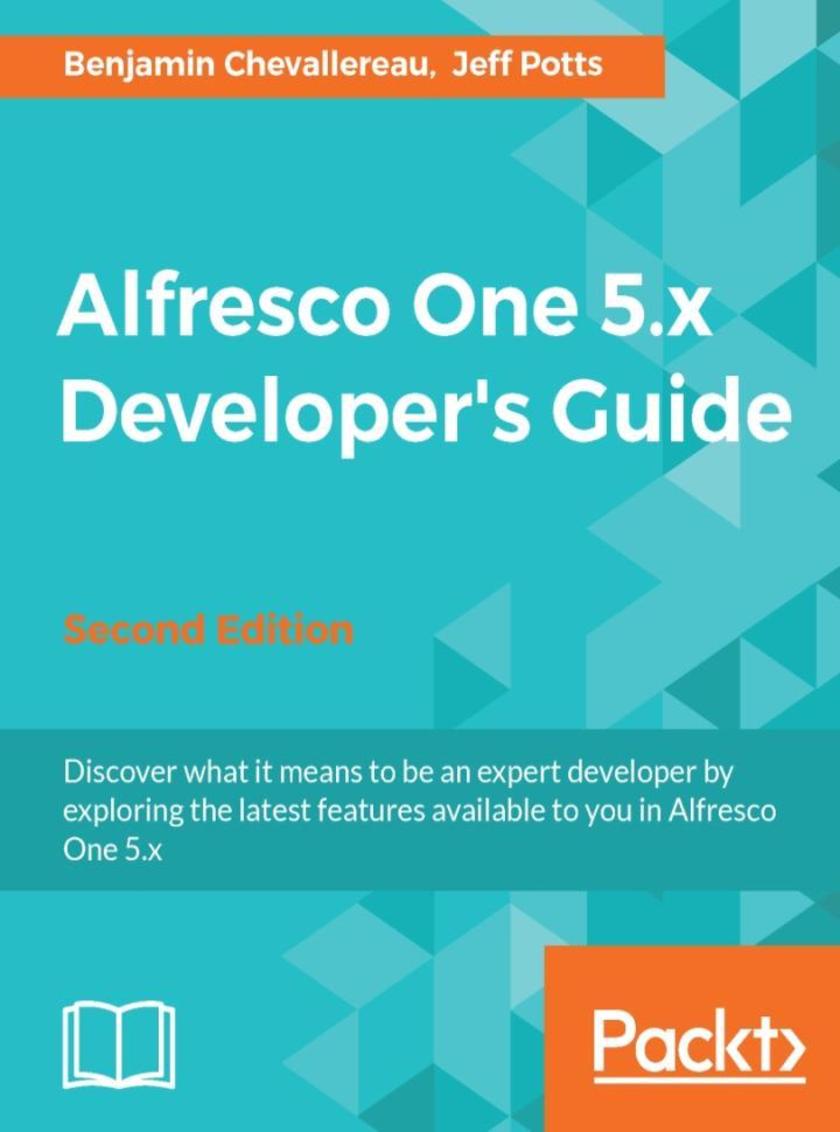
Alfresco One 5.x Developer’s Guide - Second Edition
¥80.65
Discover what it means to be an expert developer by exploring the latest features available to you in Alfresco One 5.x About This Book Create reliable and secure enterprise apps with the latest Alfresco One 5.x platform Explore all the latest Alfresco One 5.x APIs such as the CMIS API, Alfresco One API, and the integrated RESTful API to get more out of your enterprise apps Unleash the power of the latest JavaScript engine and the JavaScript API for Alfresco to customize your existing apps for the Alfresco 5 platform Who This Book Is For If you’re an enterprise app developer who wants to create custom applications with Alfresco, then this book is for you. Previous knowledge with Alfresco would be helpful but is not necessary. What You Will Learn Create and manage a custom content model Configure the Alfresco Share user interface Build a new AngularJS 2.0 application Create business process definitions using Activiti Designer Discover the most common extensions provided by Alfresco Configure Alfresco to authenticate against LDAP, including & chaining" LDAP with Alfresco authentication Get familiar with the latest features of Alfresco Mobile SDK, Smart Search, and the new Angular framework In Detail Do you want to create more reliable and secure solutions for enterprise appsAlfresco One 5.x is your gateway to developing the best industry-standard enterprise apps and this book will help you to become a pro with Alfresco One 5.x development. This book will help you create a complete fully featured app for your organization and while you create that perfect app, you will explore and implement the new and intriguing features of Alfresco. The book starts with an introduction to the Alfresco platform and you’ll see how to configure and customize it. You will learn how to work with the content in a content management system and how you can extend it to your own use case. Next, you will find out how to work with Alfresco Share, an all-purpose user interface for general document management, and customize it. Moving on, you write web *s that create, read, and delete data in the back-end repository. Further on from that, you’ll work with a set of tools that Alfresco provides; to generate a basic AnglularJS application supporting use cases, to name a few authentication, document list, document view. Finally, you’ll learn how to develop your own Alfresco Mobile app and understand how Smart Folders and Search manager work. By the end of the book, you’ll know how to configure Alfresco to authenticate against LDAP, be able to set up Single Sign-On (SSO), and work with Alfresco’s security services. Style and approach This book takes a step-by-step practical tutorial-style approach helping you create a complete enterprise app using Alfresco.
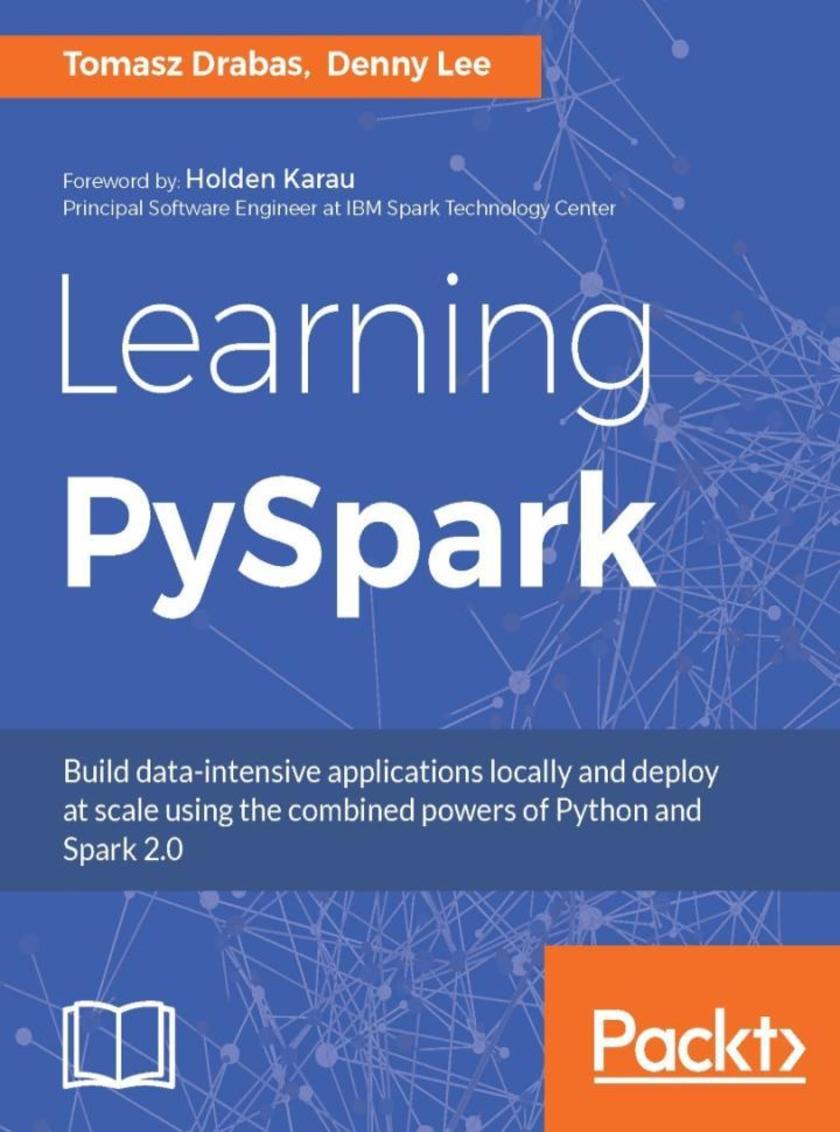
Learning PySpark
¥80.65
Build data-intensive applications locally and deploy at scale using the combined powers of Python and Spark 2.0 About This Book Learn why and how you can efficiently use Python to process data and build machine learning models in Apache Spark 2.0 Develop and deploy efficient, scalable real-time Spark solutions Take your understanding of using Spark with Python to the next level with this jump start guide Who This Book Is For If you are a Python developer who wants to learn about the Apache Spark 2.0 ecosystem, this book is for you. A firm understanding of Python is expected to get the best out of the book. Familiarity with Spark would be useful, but is not mandatory. What You Will Learn Learn about Apache Spark and the Spark 2.0 architecture Build and interact with Spark DataFrames using Spark SQL Learn how to solve graph and deep learning problems using GraphFrames and TensorFrames respectively Read, transform, and understand data and use it to train machine learning models Build machine learning models with MLlib and ML Learn how to submit your applications programmatically using spark-submit Deploy locally built applications to a cluster In Detail Apache Spark is an open source framework for efficient cluster computing with a strong interface for data parallelism and fault tolerance. This book will show you how to leverage the power of Python and put it to use in the Spark ecosystem. You will start by getting a firm understanding of the Spark 2.0 architecture and how to set up a Python environment for Spark. You will get familiar with the modules available in PySpark. You will learn how to abstract data with RDDs and DataFrames and understand the streaming capabilities of PySpark. Also, you will get a thorough overview of machine learning capabilities of PySpark using ML and MLlib, graph processing using GraphFrames, and polyglot persistence using Blaze. Finally, you will learn how to deploy your applications to the cloud using the spark-submit command. By the end of this book, you will have established a firm understanding of the Spark Python API and how it can be used to build data-intensive applications. Style and approach This book takes a very comprehensive, step-by-step approach so you understand how the Spark ecosystem can be used with Python to develop efficient, scalable solutions. Every chapter is standalone and written in a very easy-to-understand manner, with a focus on both the hows and the whys of each concept.
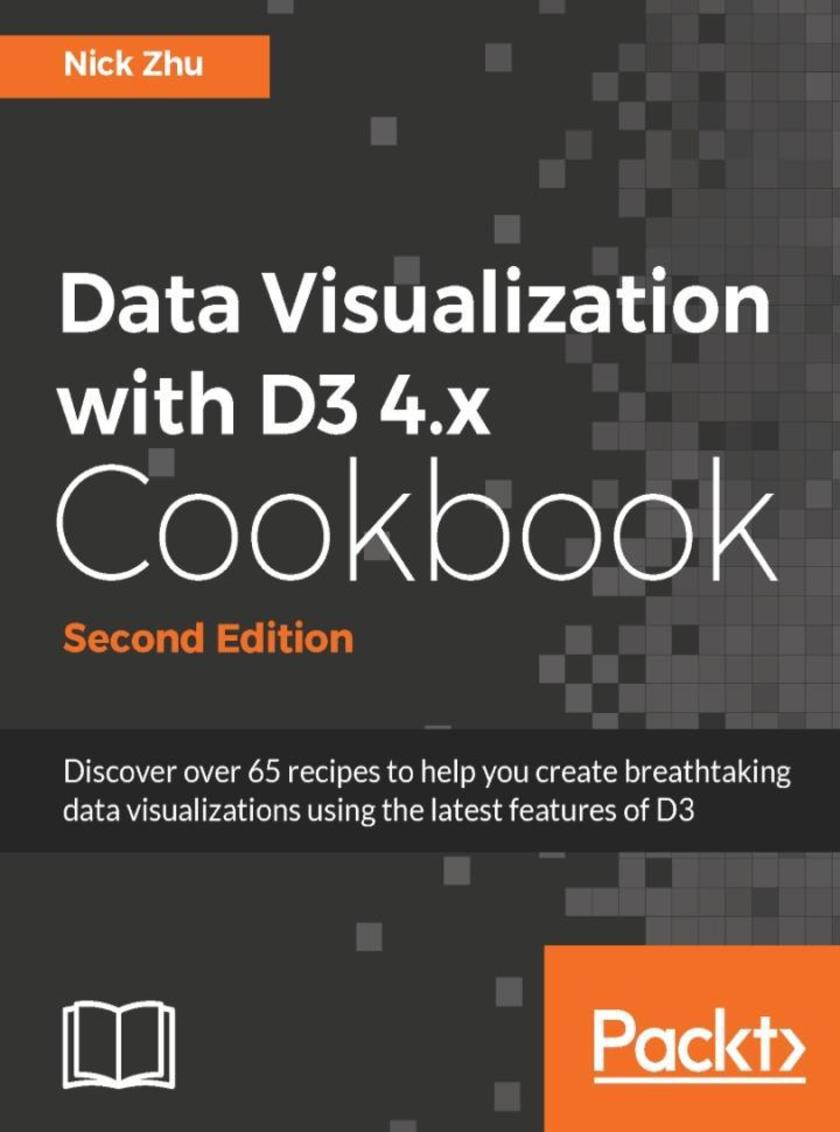
Data Visualization with D3 4.x Cookbook - Second Edition
¥80.65
Discover over 65 recipes to help you create breathtaking data visualizations using the latest features of D3 About This Book Learn about D3 4.0 from the inside out and master its new features Utilize D3 packages to generate graphs, manipulate data, and create beautiful presentations Solve real-world visualization problems with the help of practical recipes Who This Book Is For If you are a developer familiar with HTML, CSS, and JavaScript, and you wish to get the most out of D3, then this book is for you. This book can serve as a desktop quick-reference guide for experienced data visualization developers. You’ll also find this book useful if you’re a D3 user who wants to take advantage of the new features introduced in D3 4.0. You should have previous experience with D3. What You Will Learn Get a solid understanding of the D3 fundamentals and idioms Use D3 to load, manipulate, and map data to any kind of visual representation on the web Create data-driven dynamic visualizations that update as the data does Leverage the various modules provided by D3 to create sophisticated, dynamic, and interactive charts and graphics Create data-driven transitions and animations within your visualizations Understand and leverage more advanced concepts such as force, touch, and Geo data visualizations In Detail This book gives you all the guidance you need to start creating modern data visualizations with D3 4.x that take advantage of the latest capabilities of JavaScript. The book starts with the basic D3 structure and building blocks and quickly moves on to writing idiomatic D3-style JavaScript code. You will learn how to work with selection to target certain visual elements on the page, then you will see techniques to represent data both in programming constructs and its visual metaphor. You will learn how map values in your data domain to the visual domain using scales, and use the various shape functions supported by D3 to create SVG shapes in visualizations. Moving on, you’ll see how to use and customize various D3 axes and master transition to add bells and whistles to otherwise dry visualizations. You’ll also learn to work with charts, hierarchy, graphs, and build interactive visualizations. Next you’ll work with Force, which is one of the most awe-inspiring techniques you can add to your visualizations, and you’ll implement a fully functional Choropleth map (a special purpose colored map) in D3. Finally, you’ll learn to unit test data visualization code and test-driven development in a visualization project so you know how to produce high-quality D3 code. Style and approach This step-by-step guide to mastering data visualizations with D3 will help you create amazing data visualizations with professional efficiency and precision. It is a solution-based guide in which you learn through practical recipes, illustrations, and code samples.

Gamification with Unity 5.x
¥80.65
Build exhilarating gaming experiences using a wide range of game elements in Unity 5.x About This Book Achieve your goals in a fun-filled way by creating gamification projects from scratch Leverage the Unity 5.X toolkit to create stunning and appealing projects Make your transition towards a pro project manager/ developer by learning tricks and techniques Who This Book Is For If you are a project manager, game developer, or programmer who wants to create successful end-to-end gamification projects from scratch, then this is the book for you. You do not need any previous experience of working with Unity 5.X. All the details required to make the most of gamifying your projects are provided in the book. What You Will Learn Assess your learners’ abilities by setting up challenges and quests Implement the game elements that relate to the project into Unity Publish your own task management application to better engage readers Improve your design using methods of playtesting and iteration Issue OpenBadges to recognize achievements and set up an online database to store your users achievements. In Detail Are you looking at implementing gamification techniques for your business and wondering where to get a complete rundown of all the tricks and techniquesWell, you have come to the right place! This book will start right from the basics such as gameplay elements and their functionalities before gradually moving onto creating your first gamification project from scratch. You’ll be given the tools and shown how to perform various techniques for creating gamified applications in different contexts. Finally, you will implement various game elements into Unity, publish your own task management application, and get to know the best practices and approaches when designing gamified experiences. Style and approach This book takes a real-world case studies approach, moving ahead in a step-by-step tutorial manner. You will create your own project from scratch, and the practical examples will help you create a successful gamification project.
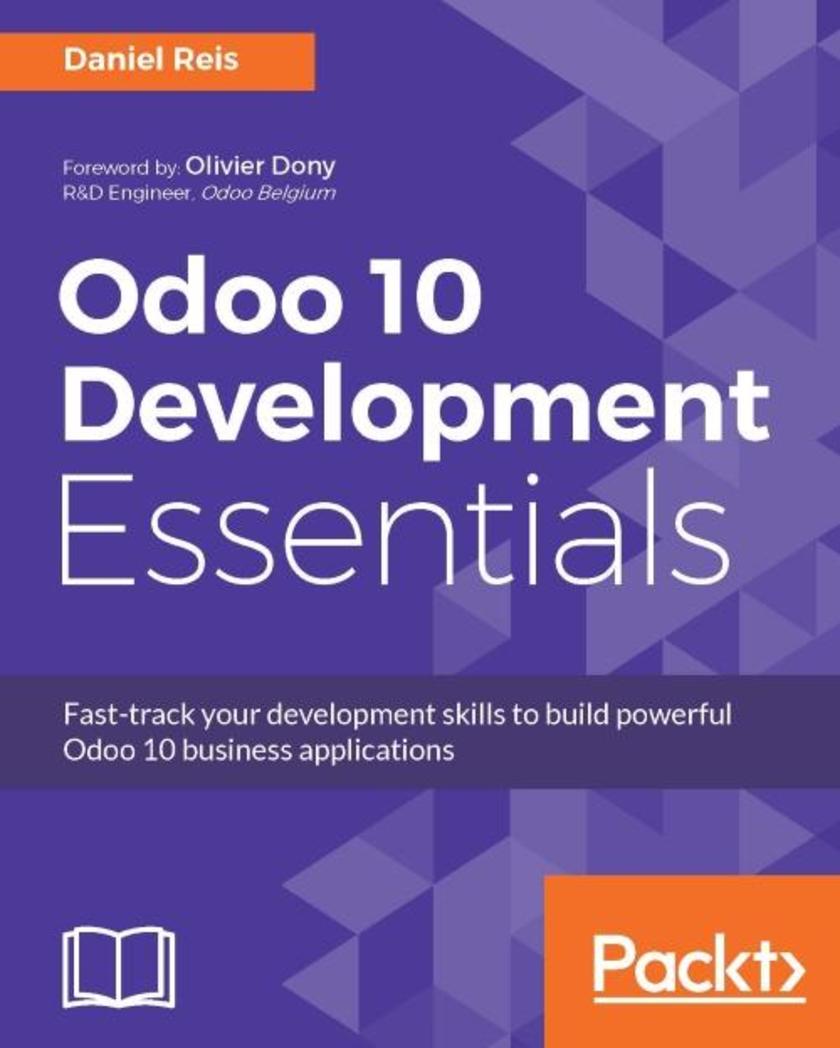
Odoo 10 Development Essentials
¥80.65
Fast-track your development skills to build powerful Odoo 10 business applications About This Book Get the most up-to-date guide on Odoo 10 and learn how to build excellent business applications with Odoo This example-rich, easy-to-follow guide enables you to build apps appropriate to your business needs Create solid business applications with the help of this precise, to-the-point guide Who This Book Is For This book caters to developers who are familiar with Python and MVC design and now want to build effective business applications using Odoo. What You Will Learn Install Odoo from source code and use all the basic techniques to setup and manage your Odoo server instances Create your first Odoo application Add Odoo's social and messaging features to your own modules Get to know the essentials of Models and Views Understand and use the server API to add business logic Use Qweb to create custom Reports Extend Odoo CMS features to create your own website controllers and pages Leverage Odoo Workflows on your applications Write module automated tests and debugging techniques Deploy your Odoo applications for production use In Detail Odoo is one of the fastest growing open source, business application development software products available. With announcement of Odoo 10, there are many new features added to Odoo and the face of business applications developed with Odoo has changed. This book will not only teach you how to build and customize business applications with Odoo, but it also covers all the new features that Odoo has to offer. This book is the latest resource on developing and customizing Odoo 10 applications. It comes packed with much more and refined content than its predecessor. It will start with building business applications from scratch and will cover topics such as module extensions, inheritance, working with data, user interfaces, and so on. The book also covers the latest features of Odoo 10, in addition to front end development, testing and debugging techniques. The book will also talk about Odoo Community and Odoo Enterprise. Style and approach This book follows a step-by-step practical approach where you will learn new concepts with every progressing chapter and create apps for business development.
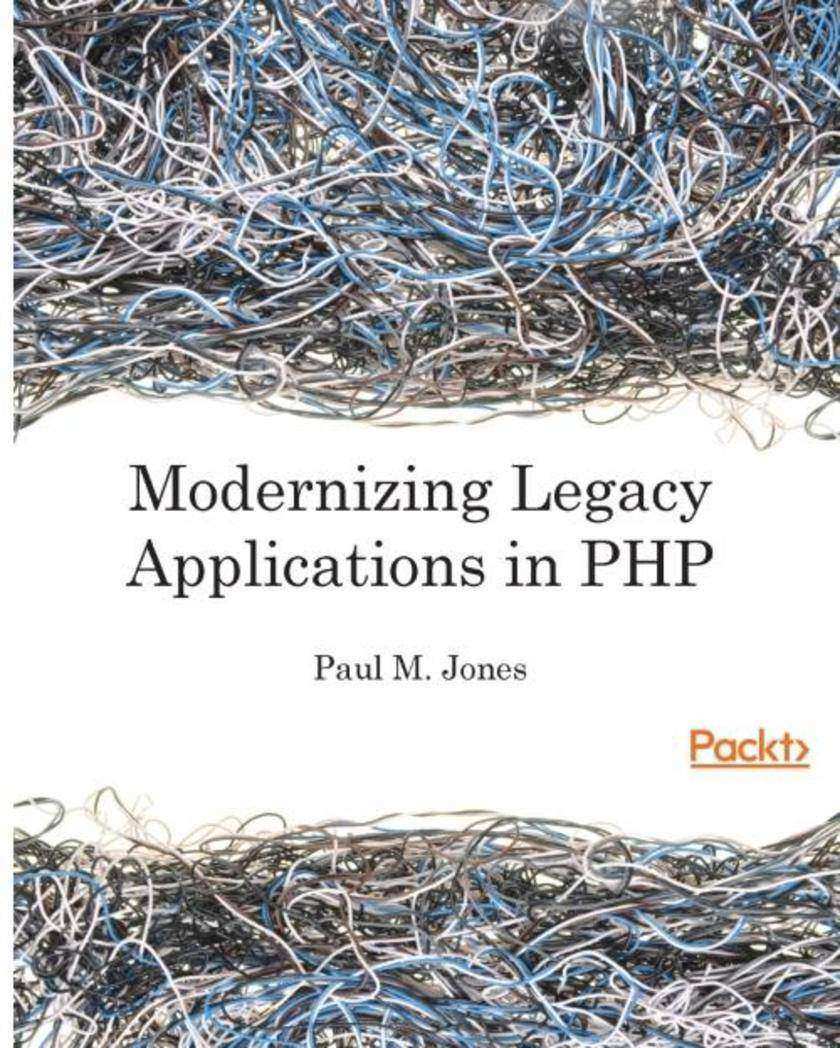
Modernizing Legacy Applications in PHP
¥80.65
Get your code under control in a series of small, specific steps About This Book Learn to extract and replace legacy artifacts, Improve your application from the ground up while keeping your codebase fully operational, Improve the quality of your legacy applications. Who This Book Is For PHP developers from all skill levels will be able to get value from this book and will be able to transform their spaghetti code applications to clean, modular applications. If you are in the midst of a legacy refactor or you find yourself in a state of despair caused by the code you have inherited, this is the book for you. All you need is to have PHP 5.0 installed, and you’re all set to change the way you maintain and deploy your code! What You Will Learn Replace global and new with dependency injection Extract SQL statements to gateways Convert action logic to controllers Remove repeated logic in page *s Create maintainable PHP code from crufty legacy PHP In Detail Have you noticed that your legacy PHP application is composed of page *s placed directly in the document root of the web serverOr, do your page *s, along with any other classes and functions, combine the concerns of model, view, and controller into the same scopeIs the majority of the logical flow incorporated as include files and global functions rather than class methodsWorking with such a legacy application feels like dragging your feet through mud, doesn’t it?This book will show you how to modernize your application in terms of practice and technique, rather than in terms of using tools like frameworks and libraries, by extracting and replacing its legacy artifacts. We will use a step-by-step approach, moving slowly and methodically, to improve your application from the ground up. We’ll show you how dependency injection can replace both the new and global dependencies. We’ll also show you how to change the presentation logic to view files and the action logic to a controller. Moreover, we’ll keep your application running the whole time. Each completed step in the process will keep your codebase fully operational with higher quality. When we are done, you will be able to breeze through your code like the wind. Your code will be autoloaded, dependency-injected, unit-tested, layer-separated, and front-controlled. Most of the very limited code we will add to your application is specific to this book. We will be improving ourselves as programmers, as well as improving the quality of our legacy application. Style and approach This book gives developers an easy-to-follow, practical and powerful process to bring their applications up to a modern baseline. Each step in the book is practical, self-contained and moves you closer to the end goal you seek: maintainable code. As you follow the exercises in the book, the author almost anticipates your questions and you will have the answers, ready to be implemented on your project.
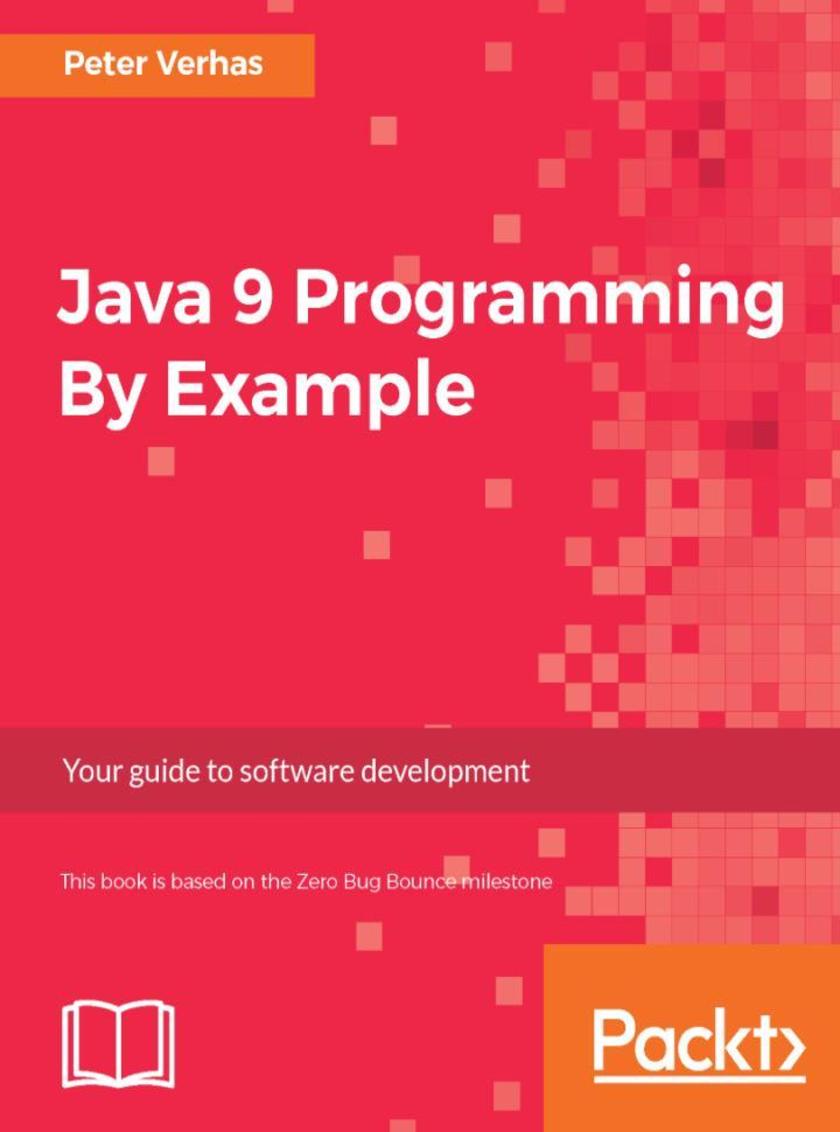
Java 9 Programming By Example
¥80.65
This book gets you started with essential software development easily and quickly, guiding you through Java's different facets. By adopting this approach, you can bridge the gap between learning and doing immediately. You will learn the new features of Java 9 quickly and experience a simple and powerful approach to software development. You will be able to use the Java runtime tools, understand the Java environment, and create Java programs. We then cover more simple examples to build your foundation before diving to some complex data structure problems that will solidify your Java 9 skills. With a special focus on modularity and HTTP 2.0, this book will guide you to get employed as a top notch Java developer. By the end of the book, you will have a firm foundation to continue your journey towards becoming a professional Java developer. What you will learn ?Compile, package and run a trivial program using a build management tool ?Get to know the principles of test-driven development and dependency management ?Separate the wiring of multiple modules from the application logic into an application using dependency injection ?Benchmark Java execution using Java 9 microbenchmarking ?See the workings of the Spring framework
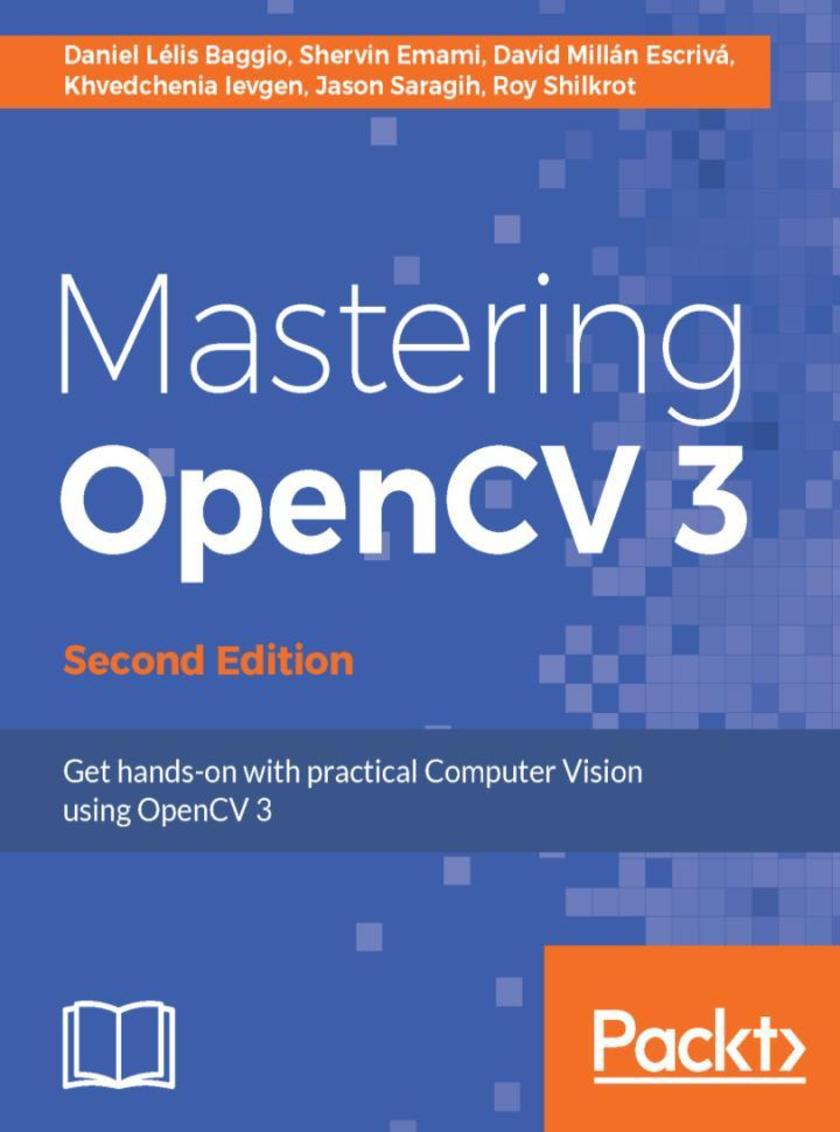
Mastering OpenCV 3 - Second Edition
¥80.65
Practical Computer Vision Projects About This Book ?Updated for OpenCV 3, this book covers new features that will help you unlock the full potential of OpenCV 3 ?Written by a team of 7 experts, each chapter explores a new aspect of OpenCV to help you make amazing computer-vision aware applications ?Project-based approach with each chapter being a complete tutorial, showing you how to apply OpenCV to solve complete problems Who This Book Is For This book is for those who have a basic knowledge of OpenCV and are competent C++ programmers. You need to have an understanding of some of the more theoretical/mathematical concepts, as we move quite quickly throughout the book. What You Will Learn ?Execute basic image processing operations and cartoonify an image ?Build an OpenCV project natively with Raspberry Pi and cross-compile it for Raspberry Pi.text ?Extend the natural feature tracking algorithm to support the tracking of multiple image targets on a video ?Use OpenCV 3's new 3D visualization framework to illustrate the 3D scene geometry ?Create an application for Automatic Number Plate Recognition (ANPR) using a support vector machine and Artificial Neural Networks ?Train and predict pattern-recognition algorithms to decide whether an image is a number plate ?Use POSIT for the six degrees of freedom head pose ?Train a face recognition database using deep learning and recognize faces from that database In Detail As we become more capable of handling data in every kind, we are becoming more reliant on visual input and what
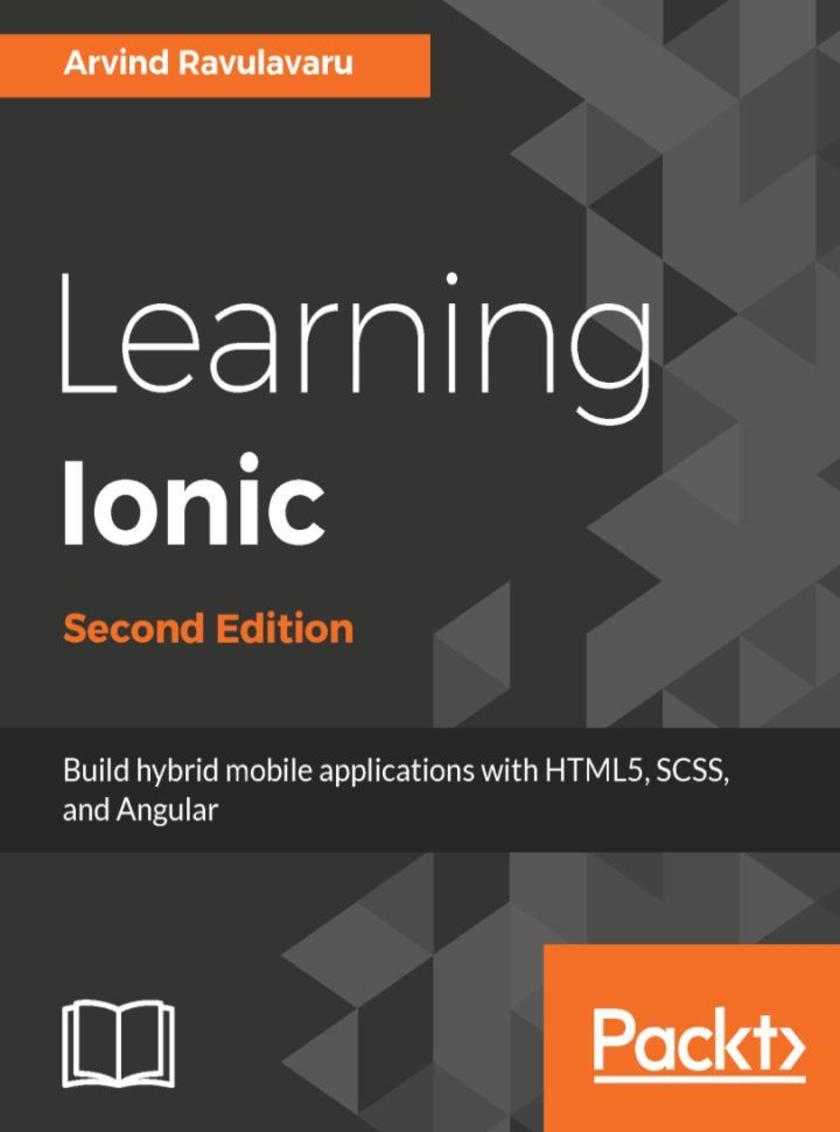
Learning Ionic - Second Edition
¥80.65
"Create real-time hybrid applications with the leader of HTML5 frameworks: Ionic Framework About This Book ?Step into the world of amazingly interactive and real-time app development using Ionic 2 ?Leverage the powerful Angular 2 along with Ionic to develop cutting edge apps ?Detailed code examples and explanations will help you get up and running with Ionic quickly and easily Who This Book Is For This book is for JavaScript developers with basic skills. No previous knowledge of Ionic is required for this book. What You Will Learn ?Understanding the world of the mobile hybrid architecture ?Scaffolding and working with Ionic templates ?Transforming a single page app to a multi-page app using Navigation Controller ?Integrating Ionic components, decorators, and services and rapidly developing complex applications ?Theming Ionic apps as well as customizing components using SCSS ?Working with Ionic Native to interface with device features, such as camera, notifications, and battery ?Building a production grade app using Ionic and Uber API to let users book a ride ?Migrating an Ionic 1 app to Ionic 2 or Ionic 3 ?Performing unit testing, end-to-end testing, and device testing on your apps ?Deploying Ionic apps to store and manage their subsequent releases In Detail Ionic makes it incredibly easy to build beautiful and interactive mobile apps using HTML5, SCSS, and Angular. Ionic also makes app development easier, faster, and more fun. This hands-on guide will help you understand the Ionic framework and how you can leverage it to create amazing real-time applications. We begin by covering the essential features of Angular 2, and then dive straight into how Ionic fits in today's world of hybrid app development and give you a better understanding of the mobile hybrid architecture along the way. Further on, you will learn how to work with Ionic decorators, services, and components, which will allow you to build complex apps using the Ionic framework. We will take a look at theming Ionic apps using the built-in SCSS setup. After that, we will explore Ionic Native, and you will learn how to integrate device-specific features, such as notifications, with the Ionic app. To complete our learning, we will be building a Rider app, using Ionic and Uber API, to book a ride. Next, you will learn how to unit test, end-to-end test, monkey test, and execute device testing on AWS Device farm. Then, we will take a look at migrating the existing Ionic 1 apps to Ionic 2 and deploy them to the App Store. The final chapter on Ionic 3 wraps up this book by explaining the new features of Ionic 3 at the time of writing this book. By the end of this book, you will be able to develop, deploy, and manage hybrid mobile applications built with Cordova, Ionic, and Angular. All the examples in this book are valid for both Ionic 2 and Ionic 3. Style and approach A step-by-step, practical approach to learning Ionic using the example of designing an online course app. Each topic is explained sequentially in the process of creating a course. This includes explanations of both basic and advanced features of Ionic. "
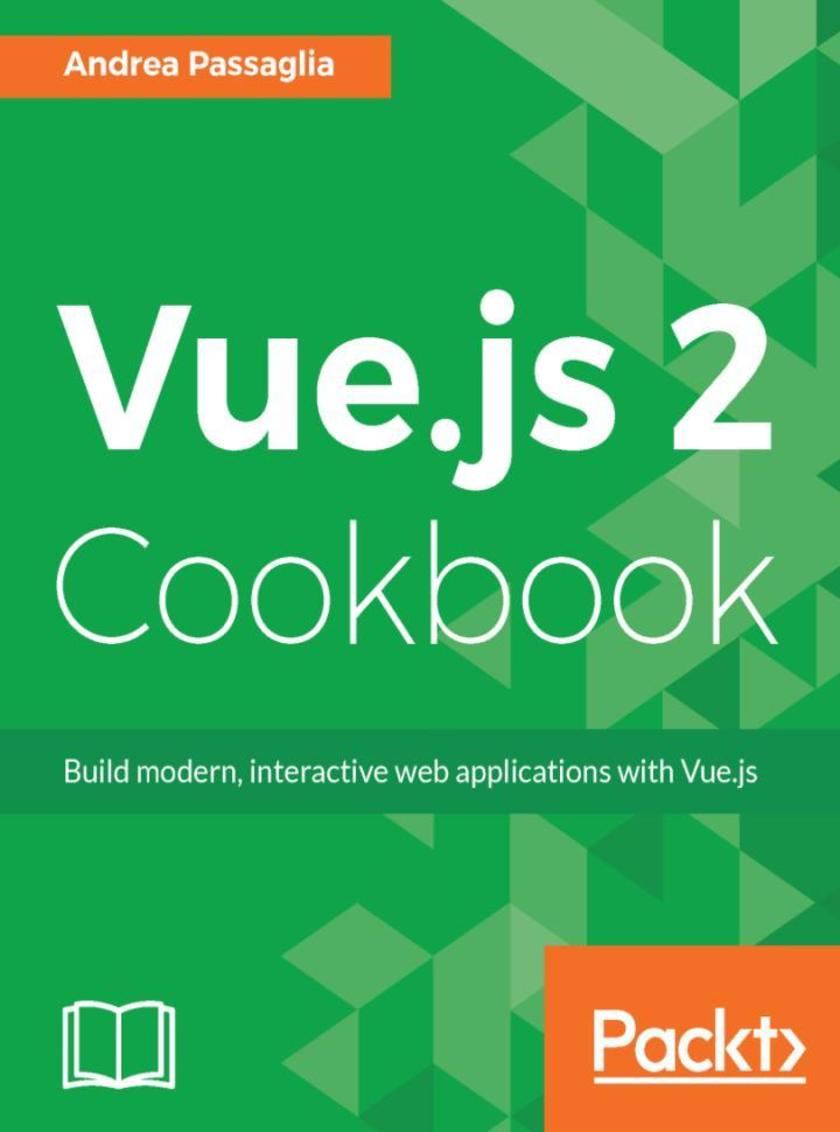
Vue.js 2 Cookbook
¥80.65
"Key Features ?Understand and use Vue's reactivity system, data binding, and computed properties ?Create fluid transitions in your application with Vue's built-in transition system ?Use Vuex and Webpack to build medium-to-large scale SPAs and enhance your development workflow Book De*ion Vue.js is an open source JavaScript library for building modern, interactive web applications. With a rapidly growing community and a strong ecosystem, Vue.js makes developing complex single page applications a breeze. Its component-based approach, intuitive API, blazing fast core, and compact size make Vue.js a great solution to craft your next front-end application. From basic to advanced recipes, this book arms you with practical solutions to common tasks when building an application using Vue. We start off by exploring the fundamentals of Vue.js: its reactivity system, data-binding syntax, and component-based architecture through practical examples. After that, we delve into integrating Webpack and Babel to enhance your development workflow using single file components. Finally, we take an in-depth look at Vuex for state management and Vue Router to route in your single page applications, and integrate a variety of technologies ranging from Node.js to Electron, and Socket.io to Firebase and HorizonDB. This book will provide you with the best practices as determined by the Vue.js community. What you will learn ?Understand the fundamentals of Vue.js through numerous practical examples ?Piece together complex web interfaces using theVue.js component system ?Use Webpack and Babel to enhance your development workflow ?Manage your "
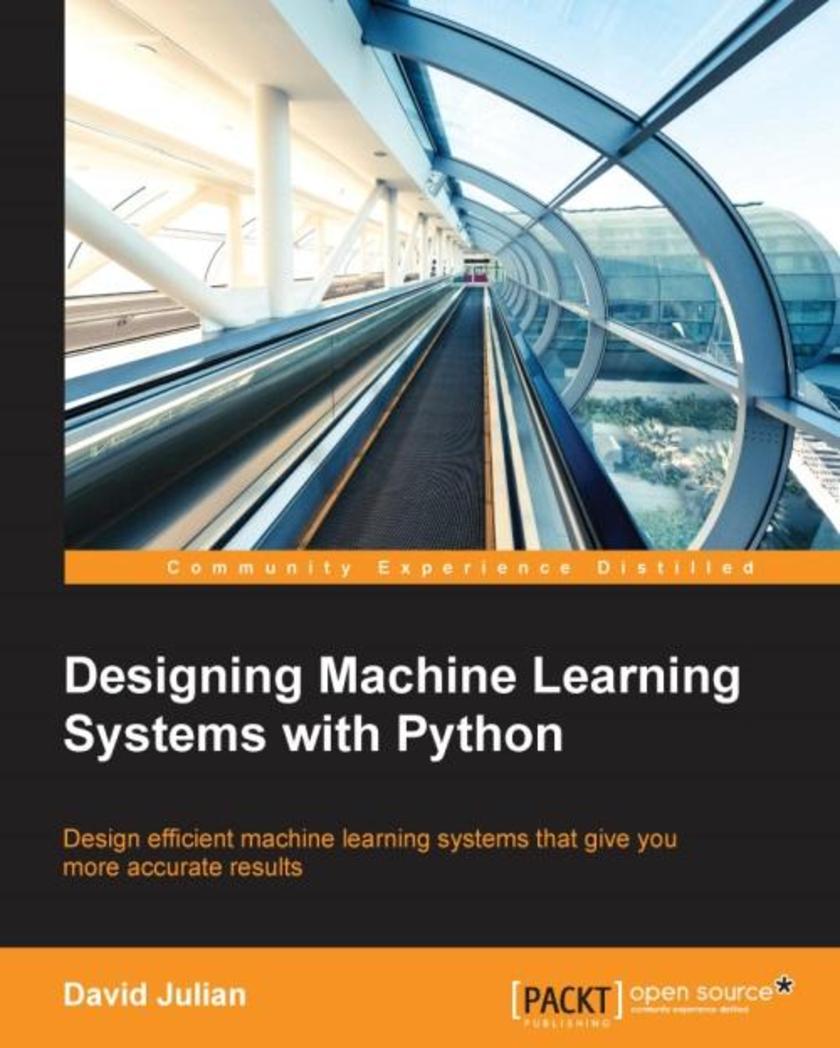
Designing Machine Learning Systems with Python
¥80.65
Design efficient machine learning systems that give you more accurate results About This Book Gain an understanding of the machine learning design process Optimize machine learning systems for improved accuracy Understand common programming tools and techniques for machine learning Develop techniques and strategies for dealing with large amounts of data from a variety of sources Build models to solve unique tasks Who This Book Is For This book is for data scientists, scientists, or just the curious. To get the most out of this book, you will need to know some linear algebra and some Python, and have a basic knowledge of machine learning concepts. What You Will Learn Gain an understanding of the machine learning design process Optimize the error function of your machine learning system Understand the common programming patterns used in machine learning Discover optimizing techniques that will help you get the most from your data Find out how to design models uniquely suited to your task In Detail Machine learning is one of the fastest growing trends in modern computing. It has applications in a wide range of fields, including economics, the natural sciences, web development, and business modeling. In order to harness the power of these systems, it is essential that the practitioner develops a solid understanding of the underlying design principles. There are many reasons why machine learning models may not give accurate results. By looking at these systems from a design perspective, we gain a deeper understanding of the underlying algorithms and the optimisational methods that are available. This book will give you a solid foundation in the machine learning design process, and enable you to build customised machine learning models to solve unique problems. You may already know about, or have worked with, some of the off-the-shelf machine learning models for solving common problems such as spam detection or movie classification, but to begin solving more complex problems, it is important to adapt these models to your own specific needs. This book will give you this understanding and more. Style and approach This easy-to-follow, step-by-step guide covers the most important machine learning models and techniques from a design perspective.
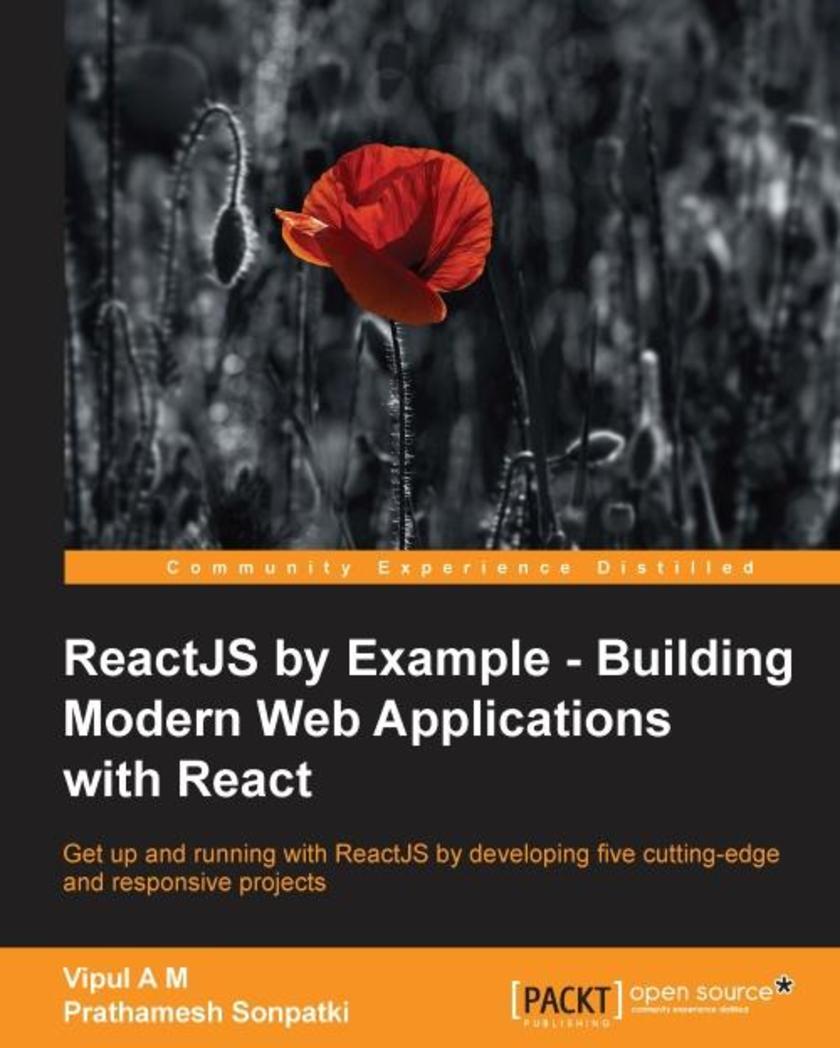
ReactJS by Example - Building Modern Web Applications with React
¥80.65
Get up and running with ReactJS by developing five cutting-edge and responsive projects About This Book Create pragmatic real-world applications while learning React and its modern developer tools Build sustainable user interfaces by transforming data into components of UI Learn how to generate reusable ReactJS components effectively Who This Book Is For If you are a web developer and wish to learn ReactJS from scratch, then this book is tailor-made for you. Good understanding of Java*, HTML, and CSS is expected. What You Will Learn Create, reuse, and compose React components using JSX Share data between various React components and techniques for data flow within a React app Handle user interactions with the help of event handlers and dynamic components Set up and use various next generation ES2015/ES6 features with React Understand the performance and immutability features of React using React add-ons Learn the techniques of Animation in React Use data stores to store model-related data and information Create a flux-based React application by using Reflux library In Detail ReactJS is an open-source JavaScript library that brings the power of reactive programming to web applications and sites. It aims to address the challenges encountered in developing single-page applications, and is intended to help developers build large, easily scalable and changing web apps. Starting with a project on Open Library API, you will be introduced to React and JSX before moving on to learning about the life cycle of a React component. In the second project, building a multi-step wizard form, you will learn about composite dynamic components and perform DOM actions. You will also learn about building a fast search engine by exploring server-side rendering in the third project on a search engine application. Next, you will build a simple frontpage for an e-commerce app in the fourth project by using data models and React add-ons. In the final project you will develop a complete social media tracker by using the flux way of defining React apps and know about the best practices and use cases with the help of ES6 and redux. By the end of this book, you will not only have a good understanding of ReactJS but will also have built your very own responsive frontend applications from scratch. Style and approach An easy-to-follow program to learn ReactJS with the help of real world projects. Each topic is explained within the context of a project and provides plenty of tips and tricks for using ReactJS.
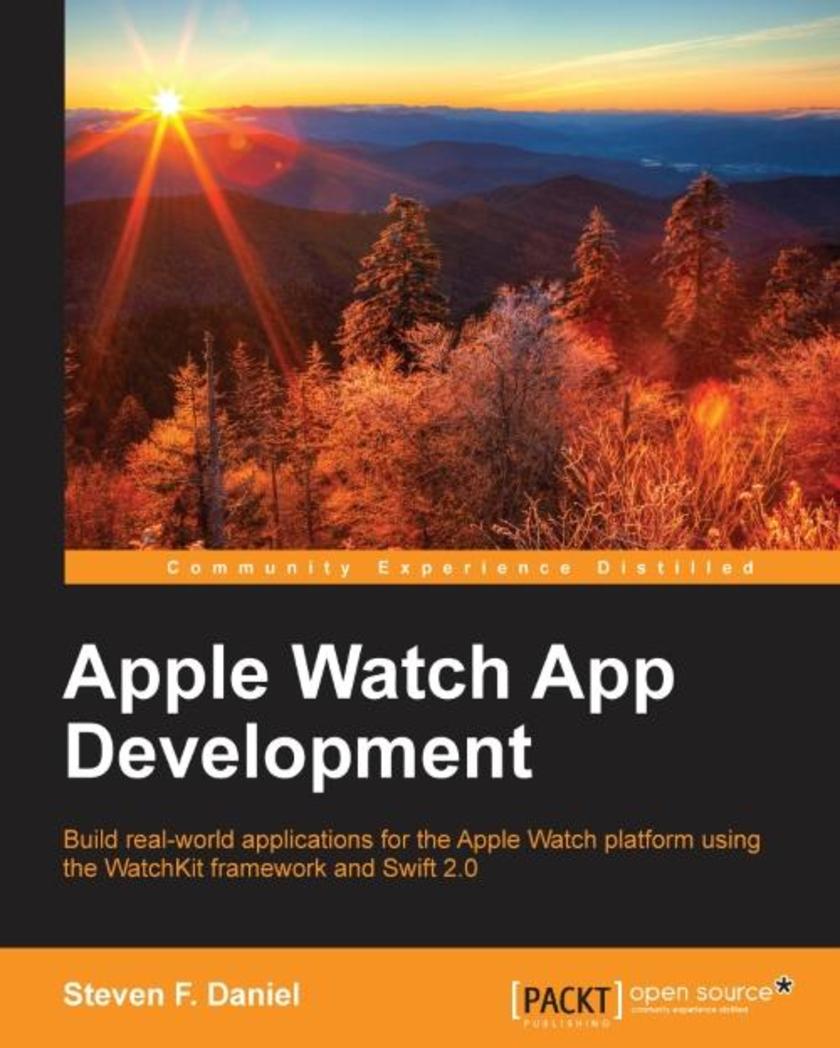
Apple Watch App Development
¥80.65
Build real-world applications for the Apple Watch platform using the WatchKit framework and Swift 2.0 About This Book Find out how to download and install the Xcode development tools before learning about Xcode playgrounds and the Swift programming language Discover everything you need to know about the WatchKit platform architecture, its classes, as well its limitations This book introduces you to the very latest mobile platform with hands-on instructions so you can build your very own Apple Watch apps Who This Book Is For This book is for developers who are interested in creating amazing apps for the Apple Watch platform. Readers are expected to have no prior experience of programming. What You Will Learn Navigate within the WatchKit interface using the page-based, modal, and hierarchical navigation techniques Work with context menus to allow your users to interact with the Apple Watch and respond to their actions to perform a task Use the MapKit framework to display a map within the WatchKit interface to track the user's current location Build effective user interfaces for the WatchKit platform and integrate iCloud capabilities to synchronize data between the iOS app and the WatchKit UI Design your apps for the Apple Watch platform by adhering to the set of User Interface design guidelines set out by Apple Reinforce image caching to display animations within the Apple Watch user interface Explore WatchKit tables, which allow your users to purchase groceries and pay for them using Apple Pay Analyze the new layout system to ensure that your Apple Watch apps work with various screen sizes In Detail Wearable are the next wave of mobile technology and with the release of Apple’s WatchKit SDK, a whole new world of exciting development possibilities has opened up. Apple Watch App Development introduces you to the architecture and possibilities of the Apple Watch platform, as well as an in-depth look at how to work with Xcode playgrounds. Benefit from a rapid introduction to the Swift programming language so you can quickly begin developing apps with the WatchKit framework and the Xcode Development IDE. Get to grips with advanced topics such as notifications, glances, iCloud, Apple pay, closures, tuples, protocols, delegates, concurrency, and using Swift Playgrounds, with each concept is backed up with example code that demonstrates how to properly execute it. Finally, discover how to package and deploy your Watch application to the Apple AppStore. By the end of this book, you will have a good understanding of how to develop apps for the Apple Watch platform, and synchronize data using iCloud between the wearable and the iOS device. Style and approach This book takes a step-by-step approach to developing applications for the Apple Watch using the Swift programming language and the WatchKit UI. Each topic is explained in a conversational and easy-to-follow style.
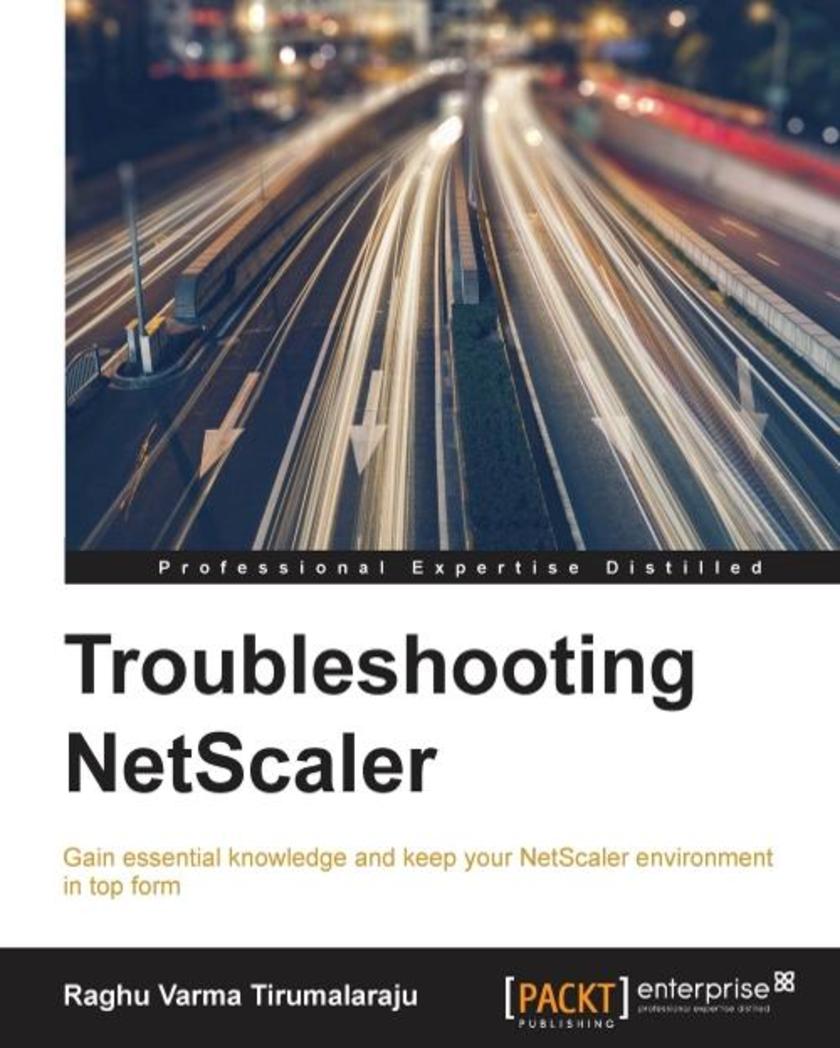
Troubleshooting NetScaler
¥80.65
Gain essential knowledge and keep your NetScaler environment in top form About This Book Learn how the main features - Load Balancing, Content Switching, GSLB, SSL offloading, AAA, AppFirewall, and Gateway work under the hood using vividly explained flows and traces Explore the NetScaler layout and the various logs, tools and methods available to help you when it’s time to debug An easy-to-follow guide, which will walk you through troubleshooting common issues in your NetScaler environment Who This Book Is For This book is aimed at NetScaler administrators who have a basic understanding of the product but are looking for deeper exposure and guidance in identifying and fixing issues to keep their application environment performing optimally. What You Will Learn Troubleshoot traffic management features such as load balancing, SSL, GSLB and content switching Identify issues with caching and compression Deal with authentication issues when using LDAP, RADIUS, certificates, Kerberos and SAML Diagnose NetScaler high availability and networking issues Explore how application firewall protections work and how to avoid false positives Learn about NetScaler Gateway integration issues with XenApp, XenDesktop, and XenMobile Deal with NetScaler system-level issues Discover the NetScaler troubleshooting tools In Detail NetScaler is a high performance Application Delivery Controller (ADC). Making the most of it requires knowledge that straddles the application and networking worlds. As an ADC owner you will also likely be the first person to be solicited when your business applications fail. You will need to be quick in identifying if the problem is with the application, the server, the network, or NetScaler itself. This book provides you with the vital troubleshooting knowledge needed to act fast when issues happen. It gives you a thorough understanding of the NetScaler layout, how it integrates with the network, and what issues to expect when working with the traffic management, authentication, NetScaler Gateway and application firewall features. We will also look at what information to seek out in the logs, how to use tracing, and explore utilities that exist on NetScaler to help you find the root cause of your issues. Style and approach This helpful guide to troubleshooting NetScaler is delivered in a comprehensive and easy-to-follow manner. The topics in the book adopt a step-by-step approach.
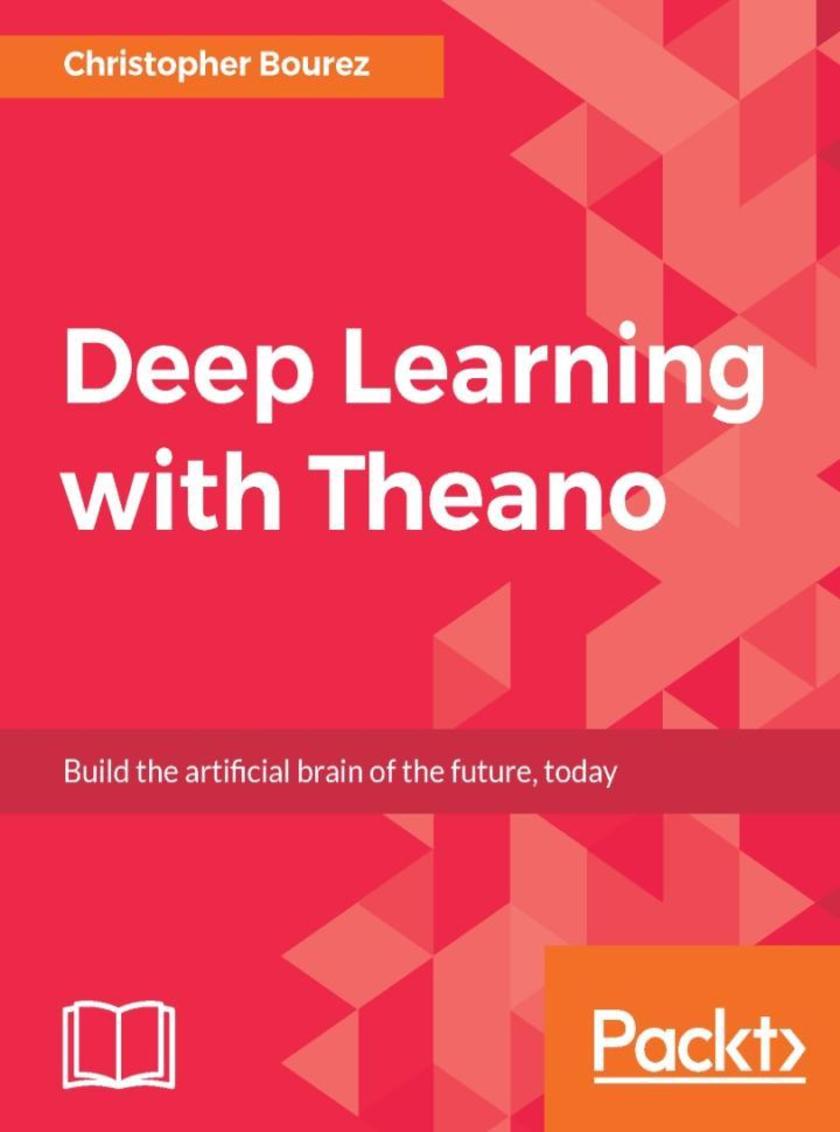
Deep Learning with Theano
¥80.65
Develop deep neural networks in Theano with practical code examples for image classification, machine translation, reinforcement agents, or generative models. About This Book ? Learn Theano basics and evaluate your mathematical expressions faster and in an efficient manner ? Learn the design patterns of deep neural architectures to build efficient and powerful networks on your datasets ? Apply your knowledge to concrete fields such as image classification, object detection, chatbots, machine translation, reinforcement agents, or generative models. Who This Book Is For This book is indented to provide a full overview of deep learning. From the beginner in deep learning and artificial intelligence, to the data scientist who wants to become familiar with Theano and its supporting libraries, or have an extended understanding of deep neural nets. Some basic skills in Python programming and computer science will help, as well as skills in elementary algebra and calculus. What You Will Learn ? Get familiar with Theano and deep learning ? Provide examples in supervised, unsupervised, generative, or reinforcement learning. ? Discover the main principles for designing efficient deep learning nets: convolutions, residual connections, and recurrent connections. ? Use Theano on real-world computer vision datasets, such as for digit classification and image classification. ? Extend the use of Theano to natural language processing tasks, for chatbots or machine translation ? Cover artificial intelligence-driven strategies to enable a robot to solve games or learn from an environment ? Generate synthetic data that looks real with generative modeling ? Become familiar with Lasagne and Keras, two frameworks built on top of Theano In Detail This book offers a complete overview of Deep Learning with Theano, a Python-based library that makes optimizing numerical expressions and deep learning models easy on CPU or GPU. The book provides some practical code examples that help the beginner understand how easy it is to build complex neural networks, while more experimented data scientists will appreciate the reach of the book, addressing supervised and unsupervised learning, generative models, reinforcement learning in the fields of image recognition, natural language processing, or game strategy. The book also discusses image recognition tasks that range from simple digit recognition, image classification, object localization, image segmentation, to image captioning. Natural language processing examples include text generation, chatbots, machine translation, and question answering. The last example deals with generating random data that looks real and solving games such as in the Open-AI gym. At the end, this book sums up the best -performing nets for each task. While early research results were based on deep stacks of neural layers, in particular, convolutional layers, the book presents the principles that improved the efficiency of these architectures, in order to help the reader build new custom nets. Style and approach It is an easy-to-follow example book that teaches you how to perform fast, efficient computations in Python. Starting with the very basics-NumPy, installing Theano, this book will take you to the smooth journey of implementing Theano for advanced computations for machine learning and deep learning.
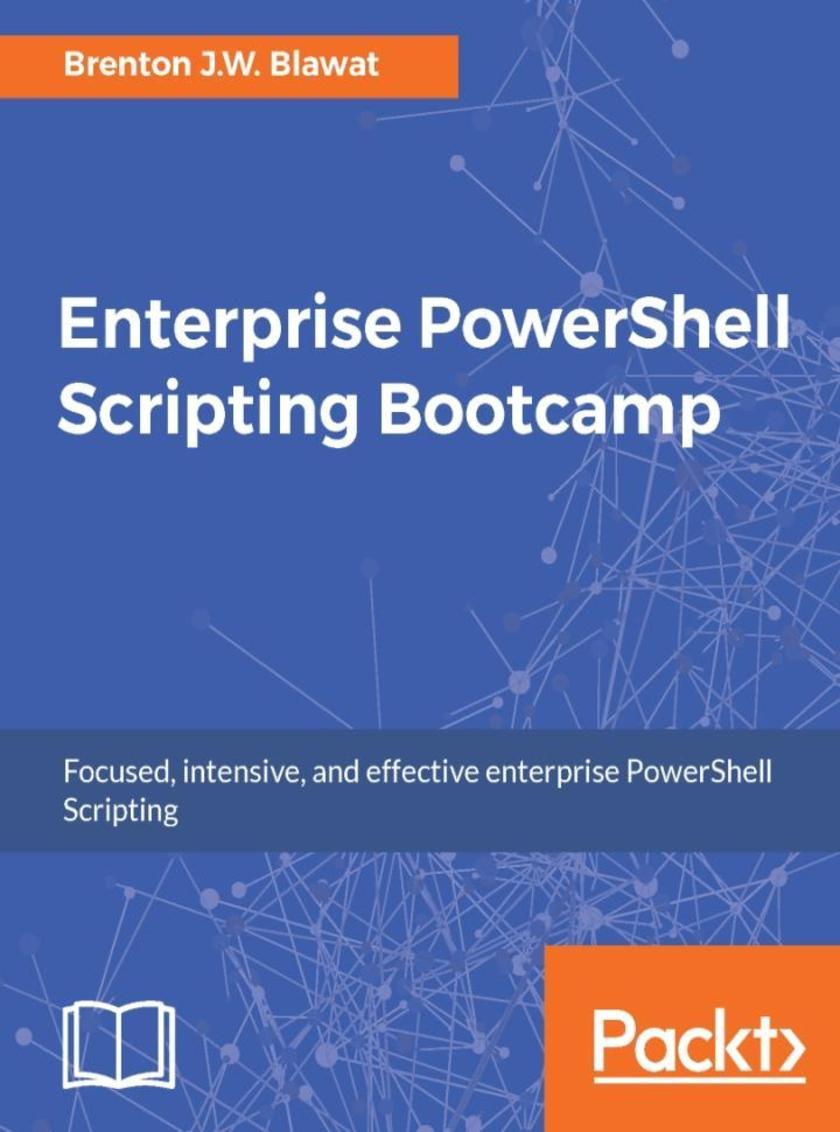
Enterprise PowerShell Scripting Bootcamp
¥80.65
The quick start guide for an advanced enterprise PowerShell framework About This Book ? Introduces industry-proven techniques that improve * efficiency and reliability ? Example-rich guide based on real-world scenarios ? Facilitates building a * that can fully scan a Windows server and identify components Who This Book Is For This book is for IT professionals and Windows administrators who would like to gain intensive, hands-on knowledge and skills on PowerShell without spending hours and hours in learning. If you have been struggling to find the time to gain proficiency and confidence with PowerShell and everyday *ing tasks What You Will Learn ? Create an advanced PowerShell *ing template that provides repeatable code to jumpstart all of your *ing projects ? Learn how to securely encrypt and store usernames, passwords, and other sensitive data in PowerShell *s and answer files ? Understand how to optimize the performance of *s to help process large datasets quickly and avoid time-consuming mistakes ? Develop a * to scan for non-standard Windows Server configurations and identify service accounts used on Windows Servers ? Gather a large list of data from a Windows server without locally or remotely logging in interactively In Detail Enterprise PowerShell Scripting Bootcamp explains how to create your own repeatable PowerShell *ing framework. This framework contains * logging methodologies, answer file interactions, and string encryption and decryption strategies. This book focuses on evaluating individual components to identify the system’s function, role, and unique characteristics. To do this, you will leverage built-in CMDlets and Windows Management Instrumentation (WMI) to explore Windows services, Windows processes, Windows features, scheduled tasks, and disk statistics. You will also create custom functions to perform a deep search for specific strings in files and evaluate installed software through executable properties. We will then discuss different *ing techniques to improve the efficiency of *s. By leveraging several small changes to your code, you can increase the execution performance by over 130%. By the end of this book, you will be able to tie all of the concepts together in a PowerShell-based Windows server scanning *. This discovery * will be able to scan a Windows server to identify a multitude of components. Style and approach This book is all about fast and intensive learning. This means, we don’t waste time in helping readers get started. The new content is about leveraging highly-effective examples to build new things, help solving problems in newer and unseen ways, and providing an enterprise-ready platform to create PowerShell Scripts.
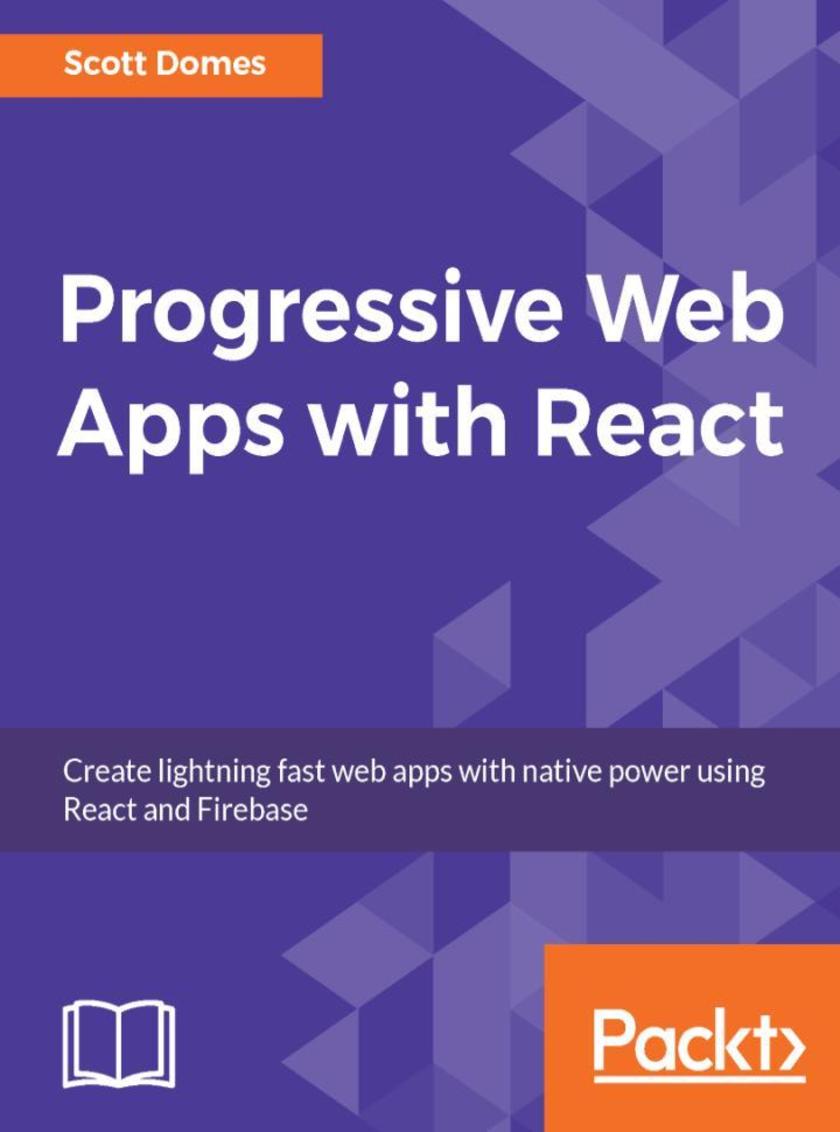
Progressive Web Apps with React
¥80.65
Enhance the performance of your applications by using React and adding the Progressive web app capability to it About This Book ? Bring the best of mobile sites and native apps to your users with progressive web applications ? Create fast, reliable, and engaging PWAs with React and Firebase ? Create high-performance applications even with low connection speeds by leveraging modern web technologies Who This Book Is For This book is for Java* Developers who want to develop high performance Web User Interfaces. This book requires basic knowledge of HTML, CSS and JavaScript. What You Will Learn ? Set up Webpack configuration, as well as get the development server running ? Learn basic Firebase configuration and deployment ? Create routes, manage multiple components, and learn how to use React Router v4 to manage the flow of data ? Use React life cycle methods to load data ? Add a service worker to the app and learn how it works ? Use a service worker to send Push Notifications ? Configure Webpack to split up the JavaScript bundle and lazy load component files ? Learn how to use the web Cache API to use your app offline ? Audit PWAs with Google's Lighthouse tool In Detail For years, the speed and power of web apps has lagged behind native applications. Progressive Web Apps (PWAs) aim to solve this by bridging the gap between the web apps and native apps, delivering a host of exciting features. Simultaneously, React is fast becoming the go-to solution for building modern web UIs, combining ease of development with performance and capability. Using React alongside PWA technology will make it easy for you to build a fast, beautiful, and functional web app. After an introduction and brief overview of the goals of PWAs, the book moves on to setting up the application structure. From there, it covers the Webpack build process and the process of creating React components. You'll learn how to set up the backend database and authentication solution to communicate with Firebase and how to work with React Router. Next, you will create and configure your web app manifest, making your PWA installable on mobile devices. Then you'll get introduced to service workers and see how they work as we configure the app to send push notifications using Firebase Cloud Messaging. We'll also explore the App Shell pattern, a key concept in PWAs and look at its advantages regarding efficient performance. Finally, you'll learn how to add offline capabilities to the app with caching and confirm your progress by auditing your PWA with Lighthouse. Also, you'll discover helper libraries and shortcuts that will help you save time and understand the future of PWA development. Style and approach This is a step-by-step book, wherein, you will use the React framework to create a complete progressive web app.




 购物车
购物车 个人中心
个人中心



